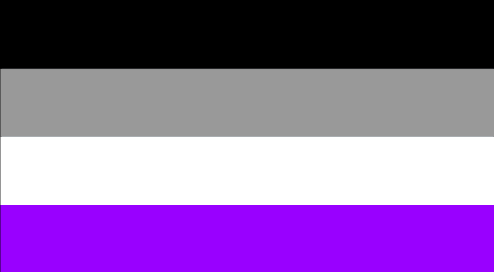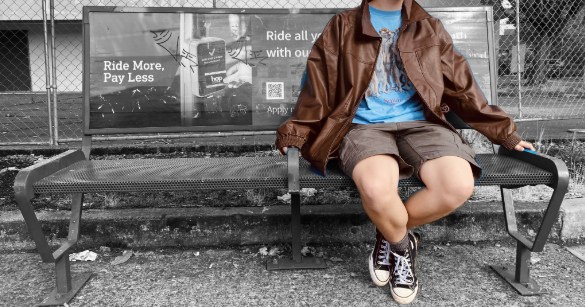
In a world full of acronyms, there’s one that draws a lot of controversy. People can’t even agree on how long it should be; I could be talking about LGBT, LGBTQ, GLBT, LGBTQQIAA+, or any other proposed string of letters. The goal is to encompass a community made up of people whose gender or sexuality differs from what society has determined to be the norm—cisgender and heterosexual. Buried deep within this acronym (and only in the longest versions) is an identity so scarcely mentioned you’ve probably never heard of it: asexuality.
Asexuality is really pretty simple. “Basically, it all comes down to not feeling regular sexual attraction,” says Sophie Cannon (11), who identifies as queer and doesn’t experience sexual attraction. It’s an easy enough concept to grasp, but one obstacle keeps people from fully understanding asexuality: TV is really, really bad at representing it.
Cannon tries to think of an ace (asexual) character she’s seen on television. “On TV?” she asks, searching her brain. “No. Um, not that I can think of.” That’s likely your response, and it definitely is if you only watch broadcast TV.
Why? Because, “there [are] still no ace characters on broadcast,” according to the LGBTQ advocacy group GLAAD’s 2018-19 report on LGBTQ representation on TV. The report counts every regular or recurring character on scripted television. It also tracks every original show from streaming platforms. Altogether, GLAAD found a grand total of one asexual character, from Netflix’s Bojack Horseman. Another one comes from cable: Freeform’s Shadowhunter. All in all, GLAAD’s exhaustive report found only two asexual characters, and those two marked a significant increase when they were introduced in 2017. Before then, there were no ace characters on TV. So it’s understandable that you may not be able to name an asexual character; there aren’t many to choose from.
This scarcity of representation has a real effect on asexual people. “[It] makes people feel really secluded and isolated if there isn’t anything for them to relate to,” says Cannon. “Because whether you like it or not, people do care if they see someone that they can feel connected to on a screen.”
In addition to these internal struggles, lack of representation can cause confusion about asexuality from outside the LGBTQ community. The Asexuality Visibility & Education Network (AVEN) has a list of questions that friends and family of aces frequently ask. The list shows people’s misunderstanding of asexuality, with questions ranging from “Does this mean they are incapable of love?” to “Should I send them to a psychologist?” Such extreme reactions reveal a fundamental scarcity of knowledge about asexuality. Cannon’s experience echoes the questions AVEN has to answer. “I’ve been told by a lot of people… ‘you just haven’t found the right person yet,’ or something like that,” says Cannon.
She thinks that more ace characters in media could help people understand what may be an uncomfortable subject. “I think for a lot of people, talking about sex at all is really hard.” But with a glut of asexual characters, Cannon imagines a different conversation around her sexuality; “You don’t know what asexuality is? Well then maybe you take this example, this example, this example,” she describes. “And now I don’t have to go into personal detail.”
The almost complete lack of asexual representation prevents this type of explanation of asexuality, as well as a full and accurate understanding of it. Ace people will have to struggle until Shadowhunters and Bojack Horseman aren’t the cultural trailblazers they are now.

































